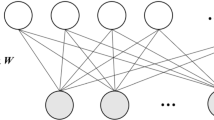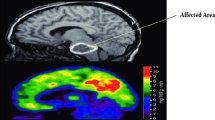Abstract
The communication of a patient with amyotrophic lateral sclerosis is limited and then the quality of lives would be greatly reduced. The patients still maintain the cognitive ability, thus developing an assistive communication interface would greatly help them in daily live. Recently, steady state visually evoked potential (SSVEP) based brain computer interfaces (BCIs) had been successfully developed to help patients. Increasing the accuracy of SSVEP-based BCIs is able to realize the assistive communication interfaces in practical applications. In this study, a modular continuous restricted Boltzmann machine (MCRBM) is proposed to improve the performance of SSVEP-based BCIs. To precisely represent the characteristics of elicited signals of SSVEP, the frequency magnitude, the coefficients of canonical correlation analysis, and the correlations of magnitude square coherence are selected as the features. In the first layer of MCRBM, the continuous restricted Boltzmann machine based neural networks are used as the basic units and applied to accurately estimate by using different types of features. In the second layer of MCRBM, a CRBM is then designed to fuse the decisions and find the final results. The experimental results showed that MCRBM produce higher accuracy compared to CRBM. Therefore, the proposed approach can be adopted in practical applications and then help patients in communicating with others.







Similar content being viewed by others
References
Anila M, Radhika P (2017) Lip contour detection based AAC device using Morse code. In: 2017 international conference on wireless communications, signal processing and networking (WiSPNET), 2017, pp 1182–1187
Chang SJ, Duan BG, Hsiao CH, Liu CW, Young SJ (2014) UV enhanced emission performance of low temperature grown Ga-doped ZnO nanorods. IEEE Photonics Technol Lett 26(1):66–69
Chen YJ, Wu JL (2016) A computer-aided articulation learning system for subjects with articulation disorders. Eng Computat 33(7):2185–2197
Chen YJ, Chen SC, Zaeni IAE, Wu CM (2016) Fuzzy tracking and control algorithm for an SSVEP-based BCI system. Appl Sci 6(10):270. https://doi.org/10.3390/app6100270
Chen SC, Chen YJ, Zaeni IAE, Wu CM (2017) A single channel SSVEP based BCI with a fuzzy feature threshold algorithm in a maze game. Int J Fuzzy Syst 19(2):553–565
Chen SC, Wu CM, Zaeni IAE, Chen YJ (2018) Applying fuzzy decision for a single channel SSVEP-based BCI on automatic feeding robot. Microsyst Technol 24(1):199–207
Coninck ED, Bohez S, Leroux S, Verbelen T, Vankeirsbilck B, Simoens P, Dhoedt B (2018) DIANNE: a modular framework for designing, training and deploying deep neural networks on heterogeneous distributed infrastructure. J Syst Softw 141:52–65
Feng J, Yin E, Jin J, Saab R, Wang Daly L, Hu X, Cichocki DA (2018) Towards correlation-based time window selection method for motor imagery BCIs. Neural Netw 102:87–95
Guy V, Soriani MH, Bruno M, Papadopoulo T, Desnuelle C, Clerc M (2018) Brain computer interface with the P300 speller: usability for disabled people with amyotrophic lateral sclerosis. Ann Phys Rehabil Med 61(1):5–11
Hornero G, Conde D, Quílez M, Domingo S, Rodríguez MP, Romero B, Casas O (2015) A wireless augmentative and alternative communication system for people with speech disabilities. IEEE Access 3:1288–1297
Illa A, Patel D, Yamini BK, Meera SS, Shivashankar N, Veeramani PK, Vengalii S, Polavarapui K, Nashi S, Nalini A, Ghosh PK (2018) Comparison of speech tasks for automatic classification of patients with amyotrophic lateral sclerosis and healthy subjects. In: 2018 IEEE international conference on acoustics, speech and signal processing, 2018, pp 6014–6018
Janbakhshi P, Kodrasi I, Bourlard H (2019) Pathological speech intelligibility assessment based on the short-time objective intelligibility measure. In: 2019 IEEE international conference on acoustics, speech and signal processing, 2019, pp. 6405–6409
Jiao Z, Gao X, Wang Y, Li J, Xu H (2018) Deep convolutional neural networks for mental load classification based on EEG data. Pattern Recogn 76:582–595
Lee CC, Chuang CC, Yeng CH, Chen YJ, Lin BS (2017) Noise suppression by minima controlled recursive averaging for SSVEP-based BCIs with single channel. IEEE Signal Process Lett 24(12):1783–1787
Li LL, Lin YH, Yang HM, Chen YJ, Wu JL (2018) Tone production and perception and intelligibility of produced speech in Mandarin-speaking cochlear implanted children. Int J Audiol 57(2):135–142
Lin ZD, Young SJ, Chang SJ (2015) CO2 gas sensors based on carbon nanotube thin films using a simple transfer method on flexible substrate. IEEE Sens J 15(12):7017–7020
Maye A, Zhang D, Engel AK (2017) Utilizing retinotopic mapping for a multi-target SSVEP BCI with a single flicker frequency. IEEE Trans Neural Syst Rehabil Eng 25(7):1026–1036
Öztürk S, Devecioğlu I, Beygi M, Atasoy A, Mutlu S, Özkan M, Güçlü B (2019) Real-time performance of a tactile neuroprosthesis on awake behaving rats. IEEE Trans Neural Syst Rehabil Eng 27(5):1053–1062
Radici E, Bonacina S, Leo GD (2016) Design and development of an AAC app based on a speech-to-symbol technology. In: 2016 38th annual international conference of the IEEE engineering in medicine and biology society (EMBC), 2016, pp 2574–2577
Rojas R (2013) Neural networks: a systematic introduction. Springer Science and Business Media, Berlin
Tantisatirapong S, Dechwechprasit P, Senavongse W, Phothisonothai M (2017) Time-frequency based coherence analysis of red and green flickering visual stimuli for EEG-controlled applications. In: 2017 9th international conference on knowledge and smart technology (KST), 2017, pp 279–283
Usanova LD, Usanova AD, Skripal AV (2012) Analysis of effect of audiovisual stimulation on parameters of encephalogram and rate of pulsation wave propagation in humans. Biomed Eng 46(1):25–28
Wang JH, Tang CT, Chen H (2017) An adaptable continuous restricted boltzmann machine in VLSI for fusing the sensory data of an electronic nose. IEEE Trans Neural Netw Learn Syst 28(4):961–974
Watanabe C, Hiramatsu K, Kashino K (2018) Modular representation of layered neural networks. Neural Networks 97:62–73
Yarushev SA, Averkin AN (2018) Time series analysis based on modular architectures of neural networks. Proc Comput Sci 123:562–567
Yin E, Zhou Z, Jiang J, Yu Y, Hu D (2015) A dynamically optimized SSVEP brain-computer interface (BCI) speller. IEEE Trans Biomed Eng 62(6):1447–1456
Young SJ, Lin ZD (2018) Ammonia gas sensors with Au-decorated carbon nanotubes. Microsyst Technol 24(10):4207–4210
Young SJ, Tang WL (2019) Wireless zinc oxide Based pH sensor system. J Electrochem Soc 166(9):B3047–B3050
Young SJ, Liiu YH, Hsiao CH, Chang SJ, Wang BC, Kao TH, Tsai KS, Wu SL (2014) ZnO-based ultraviolet photodetectors with novel nanosheet structures. IEEE Trans Nanotechnol 13(2):238–244
Zeng Z, Li X (2019) Application of human computing in image captioning under deep learning. Microsyst Technol. https://doi.org/10.1007/s00542-019-04473-5
Zhang Y, Wang Y, Zhou G, Jin J, Wang B, Wang X, Cichocki A (2018) Multi-kernel extreme learning machine for EEG classification in brain-computer interfaces. Expert Syst Appl 96:302–310
Zheng Q, Zhu F, Qin J, Heng PA (2018) Multiclass support matrix machine for single trial EEG classification. Neurocomputing 275:869–880
Acknowledgements
The current authors gratefully acknowledge the support provided to this study by the Ministry of Science and Technology, Taiwan, Republic of China, under Contract MOST 107-2637-E-218-005 and Higher Education Sprout Project, Ministry of Education, Taiwan, Republic of China, under Contract 1300-107P735.
Author information
Authors and Affiliations
Contributions
C-CL and C-CC contributed equally to this paper. Y-JC analyzed data and wrote the main paper; B-SL collected all data and provided statistical analysis; C-HY took parts in surveillance of performing the experiment and study design; ECS dedicated his effort to study design and interpretive analysis; C-CL and C-CC designed the study and directed the experiment. All authors discussed the results and implications and commented on the manuscript at all stages.
Corresponding author
Ethics declarations
Conflicts of interest
The authors declare no conflict of interest.
Additional information
Publisher's Note
Springer Nature remains neutral with regard to jurisdictional claims in published maps and institutional affiliations.
Rights and permissions
About this article
Cite this article
Lee, CC., Chuang, CC., Yeng, CH. et al. Using a novel modular continuous restricted Boltzmann machine to SSVEP-based BCIs for amyotrophic lateral sclerosis. Microsyst Technol 28, 221–227 (2022). https://doi.org/10.1007/s00542-019-04589-8
Received:
Accepted:
Published:
Issue Date:
DOI: https://doi.org/10.1007/s00542-019-04589-8




